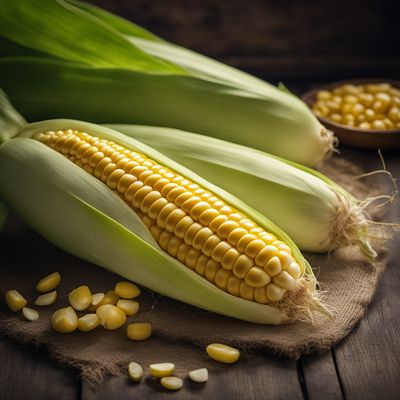
Ingredient
Fleawort (infusion seeds)
"Nature's Digestive Aid: Unveiling the Power of Fleawort Infusion Seeds"
Fleawort infusion seeds, also known as Plantago psyllium, are small, oval-shaped seeds that are rich in soluble fiber. They have a mild, nutty flavor and a slightly crunchy texture. These seeds are typically light brown or tan in color and are often used as a natural remedy for digestive issues due to their ability to absorb water and promote regular bowel movements.
Origins and history
Fleawort has a rich historical background, with its use dating back to ancient times. It is believed to have originated in the Mediterranean region and has been used in traditional medicine by various cultures, including the ancient Egyptians and Greeks. Fleawort seeds were highly valued for their medicinal properties, particularly for their ability to relieve constipation and promote overall digestive health.
Nutritional information
Fleawort infusion seeds are a nutritional powerhouse, packed with fiber, particularly soluble fiber, which aids in digestion and promotes a feeling of fullness. They are also a good source of minerals such as iron, magnesium, and zinc.
Allergens
Fleawort infusion seeds are generally considered safe for consumption and do not pose significant allergenic risks. However, individuals with known allergies to seeds or plants in the Plantago family should exercise caution.
How to select
When selecting fleawort infusion seeds, look for a reputable brand or supplier that offers high-quality, organic seeds. Check the packaging for any signs of damage or moisture, and ensure that the seeds are within their expiration date.
Storage recommendations
To maintain the freshness and quality of fleawort infusion seeds, store them in an airtight container in a cool, dry place. Avoid exposure to moisture, heat, or direct sunlight, as these can degrade the seeds' nutritional value and flavor.
How to produce
Fleawort infusion seeds are typically grown commercially by experienced farmers. However, if you have a green thumb, you can try growing fleawort plants in your garden by sowing the seeds in well-drained soil and providing adequate sunlight and water.
Preparation tips
To use fleawort infusion seeds, they are often soaked in water or other liquids to form a gel-like consistency. This gel can be added to smoothies, baked goods, or used as a thickening agent in soups and sauces. It is important to drink plenty of water when consuming fleawort infusion seeds to prevent any potential choking hazards.
Culinary uses
Fleawort infusion seeds are commonly used in gluten-free baking as a binding agent and to add moisture to recipes. They can also be used as a thickening agent in soups, stews, and sauces. Additionally, they are often incorporated into smoothies and breakfast cereals for added fiber and texture.
Availability
Fleawort infusion seeds are commonly available in health food stores, specialty grocery stores, and online retailers. They are cultivated in various regions, including India, Pakistan, and parts of Europe.
More ingredients from this category » Browse all

Lapacho (infusion bark)
The Healing Elixir from the Forest

Sweet corn (stigmas styles)
The Golden Threads: Sweet Corn Stigmas Styles

Hibiscus (infusion seeds)
The Vibrant Infusion

Soap-bark tree (infusion bark)
The Natural Cleanser: Soap-Bark Tree

Juniper (infusion bark, wood, shoots)
Exploring the Essence of Juniper: From Bark to Shoots

Chamomile (infusion seeds)
"The Soothing Elixir: Unveiling the Magic of Chamomile Infusion Seeds"

Quassia (infusion bark, wood)
Bitter Elixir from Nature's Pharmacy

Fragrant sumac (infusion bark)
The Aromatic Essence: Fragrant Sumac

Horse-chestnut (infusion seeds, bark)
The Majestic Remedy

Witch hazel (infusion bark)
Nature's Astringent

Wild angelica (infusion fruits)
The Enchanting Infusion Fruits of Wild Angelica

Purging cassia (infusion fruits)
The Detoxifying Spice: Purging Cassia